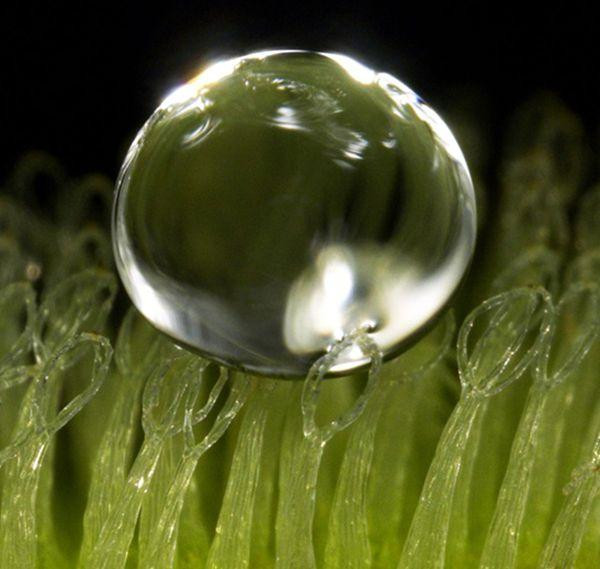Could the absorptive properties of water ferns help clean-up oil spills?
Researchers are taking inspiration from the unique properties of aquatic ferns to develop the material.

The leaves of some water ferns (salvinia) are able to absorb large amounts of oil in a short time while also being highly water repellent, properties which researchers at the Karlsruhe Institute of Technology (KIT) and Bonn University in Germany have been investigating.
They have found the unique characteristics are a result of the hairy microstructure of salvinia's leaves. This new knowledge is being used to help develop a material called Nanofur which is designed to clear up oil spills in an environmentally friendly way.
Oil spills from damaged pipelines, oil tanker disasters or oil drilling platforms can result in devastating pollution, however, most conventional methods for cleaning them up have their drawbacks. The use of chemical substances which accelerate oil decomposition – known as oil combustion – can be a polluting practise in itself, while natural materials, such as sawdust or plant fibres, which are used to absorb the oil, are not very effective because they absorb large amounts of water as well.
In their quest to find an oil-spill clean-up alternative, the researchers compared various species of aquatic ferns. "We already knew that the leaves of these plants repel water, but for the first time now, we have studied their capacity to absorb oil," Claudia Zeiger says, leader of the project at KIT's Institute of Microstructure Technology.
Aquatic ferns, which originally came from tropical and subtropical regions, can now be found in parts of Europe where they are often considered a weed because they reproduce strongly. Their potential, as a low cost, fast and environmentally friendly oil absorber has intrigued the researchers.
When the leaves of aquatic ferns are placed on oil, within 30 seconds they reach maximum absorption and can then be removed, together with the absorbed oil. The leaves are covered in trichomes – hairy extensions just a few millimetres in length – which boost their absorption ability.
"Oil-absorbing capacity is determined by the shape of the hair ends," Zeiger says. The largest quantity of oil was absorbed by leaves of the water fern salvinia molesta, whose hair ends are shaped like an egg-beater.
Based on this knowledge, researchers have improved the plastic Nanofur material being developed at KIT, which mimics the water-repellent and oil-absorbing effect of salvinia.
© Copyright IBTimes 2024. All rights reserved.






